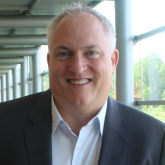The U.S. Department of Energy (DOE) has released the first-ever Transmission Interconnection Roadmap to accelerate the connection of clean energy projects to the nation’s electric grid, which currently relies on fossil fuel-based energy sources like gas, coal and oil. In 2022, the Supreme Court limited the Environmental Protection Agency (EPA)’s ability to regulate pollution from these sources. The purpose and goal of the roadmap is to address the existing backlog of solar, wind and battery projects seeking to be built and provides solutions to speed up the interconnection process, achieving the Biden-Harris Administration’s goal of 100% clean electricity by 2035.
The roadmap was developed by DOE’s Interconnection Innovation e-Xchange (i2X). It serves as a guide for a variety of stakeholders, including transmission providers, state agencies, federal regulators, equipment manufacturers, and advocacy groups.
The challenge the industry is facing is that nearly 2,600 gigawatts of generation and storage capacity are actively seeking grid interconnection, representing an eight-fold increase since 2014. Existing procedures for interconnection have led to uncertainties, delays, inequities, and added costs. Clearing the backlog of nearly 12,000 solar, wind, and storage projects is essential for deploying clean electricity to more Americans, indicated the U.S. Secretary of Energy Jennifer M. Granholm. Solar energy accounted for 87% of all new energy created in January 2024. The roadmap outlines 35 solutions organized around four goals:
- Increase data access, transparency and security
- Improve process and timing
- Promote economic efficiency
- Maintain a secure and reliable grid
It also sets aggressive success targets for interconnection improvement by 2030. These targets include shorter interconnection times, lower cost variance, increased completion rates and zero disturbance events attributed to modeling. Digitalization is poised to play a crucial role in accelerating clean energy transitions. Here a just a few ways:
- Leveraging digital technologies, energy systems can become more efficient, reducing costs and enhancing overall performance
- Automation, data analytics, and connectivity enable streamlined operations and maintenance
- Help monitor and track emissions more effectively
- Enables the design, maintenance, and operation of processes that lead to less carbon-intensive methods
- Digitalizing permit application processes and stakeholder engagement can expedite clean energy project approvals
Two pivotal elements essential to the roadmap’s success are DERMS and microgrids. DERMS, or Distributed Energy Resource Management Systems, are sophisticated software platforms designed to efficiently control and optimize a variety of distributed energy resources, including rooftop solar installations, energy storage solutions, and electric vehicles. These systems are instrumental in bolstering grid stability and seamlessly incorporating renewable energy sources.
On the other hand, microgrids represent self-sufficient energy networks capable of functioning autonomously or in conjunction with the primary grid. They are adept at integrating sustainable energy generators, like solar panels, with energy storage devices, such as batteries, thereby enhancing the overall resilience and dependability of the electrical grid.
Fundamentally, the synergy between DERMS and microgrids is pivotal for the success of the energy roadmap. DERMS enhance the efficiency of local energy resources, fostering a grid that is both cleaner and more dependable. Concurrently, microgrids provide self-sufficient, robust energy networks that bolster both sustainability and the stability of the grid.
To encapsulate, the Transmission Interconnection Roadmap is designed to expedite the integration of renewable energy projects into the grid. This initiative is instrumental in advancing the shift towards an energy system that is not only greener but also more resilient.
.png?h=250&w=975&la=ru&hash=545D390CBBF17FDD325C506BBD0F6589)

Leave A Comment